Yakitori (やきとり) is a traditional food in Japan that consists of a bite-sized chicken stab on a skewer and grill on an open fire. When it comes to chicken on a stick, the Japanese have their own best version of what locals call Yakitori. The custom of grilling and eating chicken meat has been around since ancient times. Locals usually coat yakitori with a sweet and savory glaze sauce. This dish is popular regardless of the season. Now, there is a lot of information for yakitori so let us get to know more about it.
Etymology of Yakitori
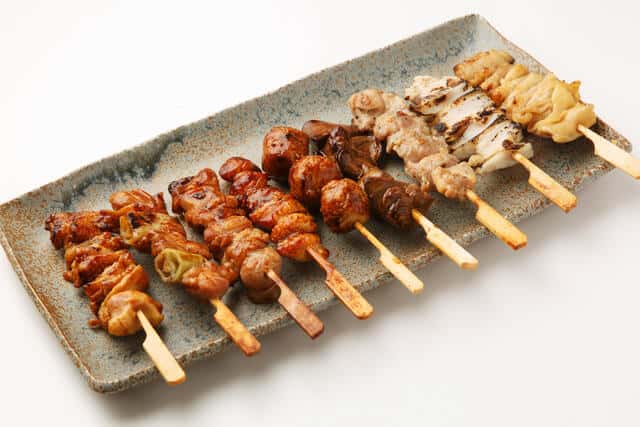
The name “Yakitori” also has its own meaning or etymology. Yakitori (焼き鳥) meaning “grilled chicken” is from “yaki (焼き)” meaning “grilled” or “toasted” and “tori (鳥) which means “bird”.
What is Yakitori?

Yakitori is a popular Japanese-style skewered chicken. Locals grilled the skewered chicken with sauce and salt. In general, yakitori grill also have pork, beef, and vegetable type of skewers (leek, onion, garlic, shiitake mushrooms, ginkgo, etc.) Yakitori ingredients such as pork, beef, and horse meat vary from region to region, and it seems that it is more common to use meat other than birds/chicken.
These chicken skewers are typically served as an appetizer, although they are hearty enough to serve as a full meal with some other dishes on the side. Most yakitori restaurants will offer only two options for flavoring: salt and white pepper, or a sweet soy sauce-and-mirin glaze.
History of Yakitori
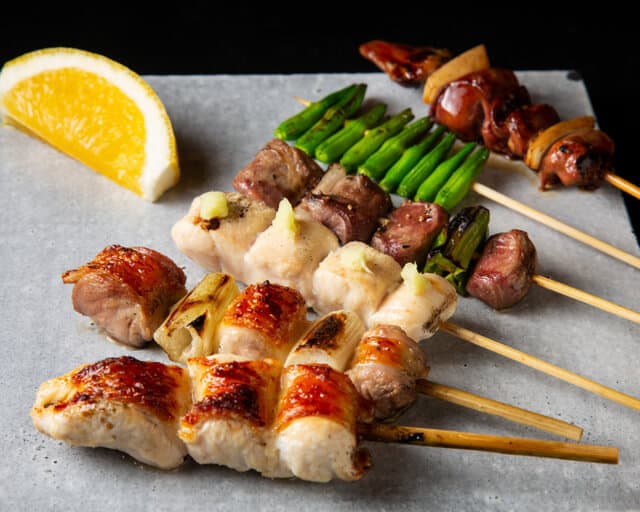
The history of yakitori stems from its main ingredient, the meat of chicken. The ancestors of chickens were originally wild birds, and locals said that chickens were introduced to Japan as livestock at the end of the Neolithic period. In the Heian period, Japan banned locals from eating chicken, and the wild birds are the replacement for these. During the Muromachi period, locals invented making “bird skewers”, and they now know wild birds such as pheasants exist.
In the middle of the Edo period, the recipe for sticking chicken on a skewer appears. Moreover, it seems that in this period, locals created the original form of the current yakitori. In the Meiji era, yakitori stalls also appeared. Additionally, the number of shops selling chicken meat, internal organs, and pork and beef skewers increased.
During the early Showa period, the chicken was still an expensive ingredient that is why high-class yakitori restaurants appear. From the United States, broilers were introduced in Japan in the latter half of the Showa ’30s and became popular, and the number of popular yakitori restaurants increased. Broiler is not the name of a chicken breed, but the name of a young bird that locals bred so that it will be fatten in a short period. In the Heisei era, local chickens, whose distribution volume was small for a while, came into the limelight in search of food safety and high quality.
Types of Yakitori
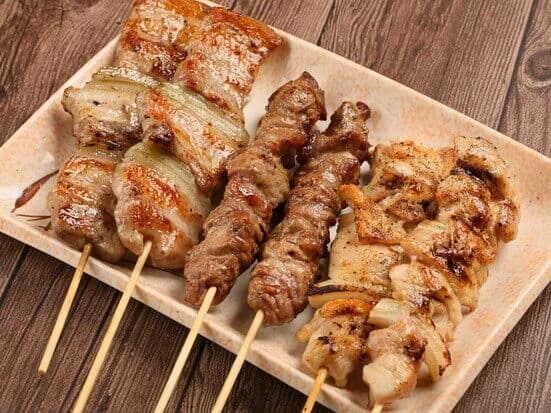
If you think that skewers don’t have classifications, then you are wrong. This yakitori has two classifications; one is with sauce and with salt. You will notice that this classification depends upon their seasonings. There are many Japanese yakitori restaurant. They have different styles, some restaurant use yakitori sauce for classic chicken and so on.
Sauce
Negima
Whole chicken meat is cut into bite-sized pieces and alternated with small sliced pieces of spring onion. This dish is a popular Yakitori choice. Speaking of Negima, there is one that serves Negima as a hotpot, they call it “Negima Nabe”.
Kawa
Select pieces of chicken skin. The somewhat thicker and juicier neck area provides the best pieces. This dish is a big hit with customers who like fatty tastes. When hot, it drips enticingly with pretty sparkling sweet and salty juices.
Tsukune
Small dumplings consist of a mixed-finely minced chicken, egg, and potato starch then skewered onto a stick for grilling. Regional variations make this dish interesting, such as recipe changes like adding finely chopped cartilage to the mixture or eating style.
Liver
Chicken Liver. Known for its unique supple texture, the chicken liver is also packed full of nourishing Vitamins A, C, E, B2, and the amino acid Glutathione (GSH).
Heart
The grilled chicken hearts need a professional touch to bring out the delicate elasticity of this dish’s ingredients.
Saygimo
Saygimo or chicken kidneys, from their shape, locals also call these sometimes “Azuki beans”. It has a taste similar to the chicken liver but with a more grainy surface texture and density.
Salt
Classic Chicken
You can make a classic yakitori by cutting chicken thighs or breast meat into bite-sized pieces and sticking them on skewers.
Chicken Fillet
Specially chosen high-quality cuts of breast meat. Lean and tender, with an abundance of protein. Some stores serve this with condiments such as Wasabi or Perilla leaves.
Chicken Wings
The wings of the chicken consist of three sections, all of which locals can grill for this dish. Being abundantly full of Collagen protein makes this dish popular with women.
Seseri
Neck meat or seseri. Just the right amount of fat and firmness makes this cut highly appetizing. The juices continue to squeeze out as you chew, prolonging the flavor. This is a rare dish, as only a small amount of this meat is in a single chicken.
Chest cartilage
The grilled cartilage is from specific parts of the chicken, such as the breastbone “Kappa”, between the neck bone and thigh bone, or knee cartilage “Genkotsu”. You can easily enjoy this one because of its unique crunchy consistency, this dish is almost always with salt.
Gizzard
Gizzard or chicken’s bonjiri. Of the chicken’s 2 stomachs, the gizzard has a surrounding double muscle that is odorless and has a pleasant crisp texture.
Yakitori Recipe
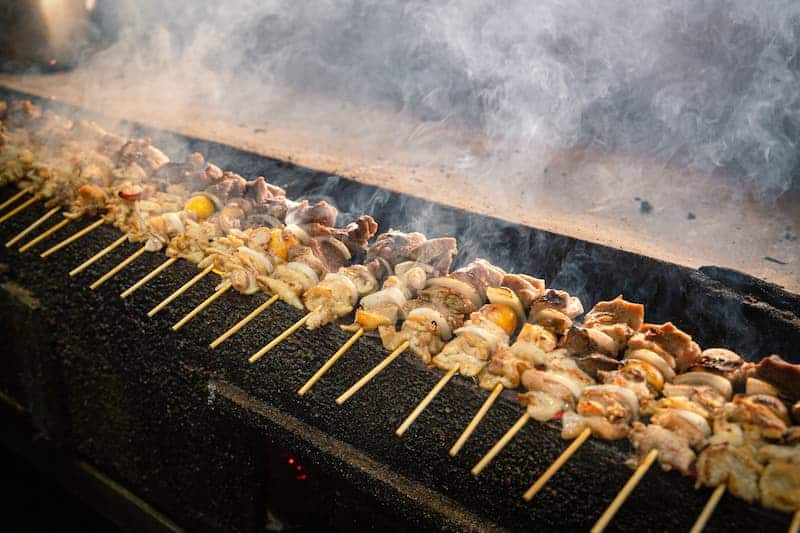
Now in this section, let’s get to know the yakitori recipe. First, the yakitori ingredients that need. It needs chicken, leek, salt, oil, soy sauce, mirin, and sugar.
How to make Yakitori?
Combine the ingredients for the sauce in a small pan and simmer over low heat until it becomes thick.
Cut chicken into 1 cm thick, 2-3 cm squares, and sprinkle with salt.
Cut the green onions or leek into 2 cm long pieces and sprinkle with vegetable oil.
Alternately stab the chicken and green onions or leek on a bamboo skewer and bake on a medium-heat grill. When it becomes brown, turn it over and cook over low heat.
Apply the sauce several times and bake fragantly.
We now know what are the types of yakitori and how to make one. Did you know that they also have health benefits according to their parts? Moreover, some restaurants serve this. You will learn that on the next page.
The Health Benefits of Eating Yakitori
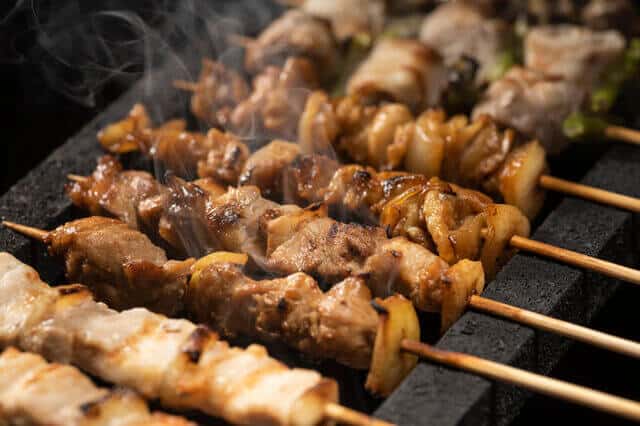
There are various chicken dishes, but yakitori has its characteristics. The point is that you can eat parts of the whole body of the chicken. This dish, which can eat various parts, is an excellent way to eat because the nutrition differs depending on the parts.
Breast Meat
The breast meat is low in fat and healthy, but they are very rich in imidazole dipeptide. This ingredient has anorexia and fatigue recovery effects and is effective in preventing summer heat fatigue. As a guideline for daily intake, 2 bottles is fine. If you buy it at a supermarket, combine it with bonito, which is also rich in imidazole dipeptide.
Chicken Skin
Although chicken skin is juicy and delicious, the fat contains in chicken has more unsaturated fatty acids than cows and pigs. And so, it does not harden in the body. It also contains a lot of vitamin K, which makes the bones stronger. About 40% of human bones consist of protein. Vitamin K is calcium and protein and has the effect of strengthening bones. The standard daily intake is 2 to 4 bottles.
Liver
The liver which is rich in iron, folic acid, and B1 vitamins is ideal for preventing anemia. Eating one is enough to prevent anemia. On the other hand, if you take too many fat-soluble vitamins such as vitamin A, it may have harmful effects, so be careful not to overeat. Pregnant women in particular need to be careful about their intake.
Gizzard
Gizzards have a delicious texture, but they are originally organs that grind what you eat. It has almost no fat and is rich in protein, so it is a part of dieting. It is also rich in zinc. Zinc has the function of activating metabolism. Two bottles can supplement the zinc required for one meal.
Differences between yakitori in regions
Even with the same name, the seasoning, garnish, meat parts, and types used differ depending on the region. In addition, there are various ways of eating this dish.
Bibai City
In Bibai City in Hokkaido, they eat this dish with its chicken meat, guts (hearts, and liver, etc.). Additionally, they also eat the skin on a skewer with salt and pepper.
Muroran City
Yakitori in southern Hokkaido uses pork, and when they simply say “yakitori,” they mean “pork skewers.” Muroran Yakitori uses pork and onions with mustard.
Fukushima City
In Fukushima Prefecture, locals established the Fukushima Yakitori Party to study how this dish would revitalize the town. In the prefecture, they popularized the Fukushima yakitori and Iitoko chicken using local chicken. D 2007, the World Yakitori grill Party held the “First Yakitori and Olympic Games” in Fukushima City. Moreover, the “Rwanda Yakitori” is use as a recognized menu.
Higashimatsuyama City
Locals eat the yakitori in Higashimatsuyama City, Saitama Prefecture with pork head meat and miso sauce blended with chili peppers. When you ask for this dish, they will serve it with Kashira and they put green onions in other parts such as the tongue and hearts and stick them on a skewer.
Imabari City
In Imabari City, Ehime Prefecture, locals grilled the “yakitori” on an iron plate without sticking on skewers, and there are many stores that use this technique too. Additionally, many stores sell the so-called skewered “yakitori”, and they call it “Imabari yakitori” and “teppanyaki yakitori”.
Nagato City
Since the prefecture is a chicken-producing area and is possible to process fresh chicken in the morning. Additionally, the seasoning of fresh meat at a yakitori restaurant is basically the original taste of chicken with salt. In addition to the good ingredients of chicken, it is with onions and cabbage. Some yakitori restaurants always have garlic powder as well as ichimi and shichimi. The Nagato style is to eat according to your taste.
Kurume City
There are many stalls in Kurume City, Fukuoka Prefecture that skewer chicken and pork, beef, pork offal, and vegetables. And even seafood (squid, scallops, shishamo, etc.). The most unique of all is that they also skewer pig trotters. The seasoning of it is mainly salt.
What is the seasoning used for Yakitori?
There are two main types of flavors or seasoning locals use salt and sauce. Depending on the type of yakitori and the restaurant, they may only have salt or sauce. Spices are sometimes use when eating, and Ichimi chili peppers, seven-flavored chili peppers. Additionally, they also use powdered Japanese pepper, wasabi, and pepper according to one’s preference.
What are the “Seven Great Yakitori Towns in Japan”?
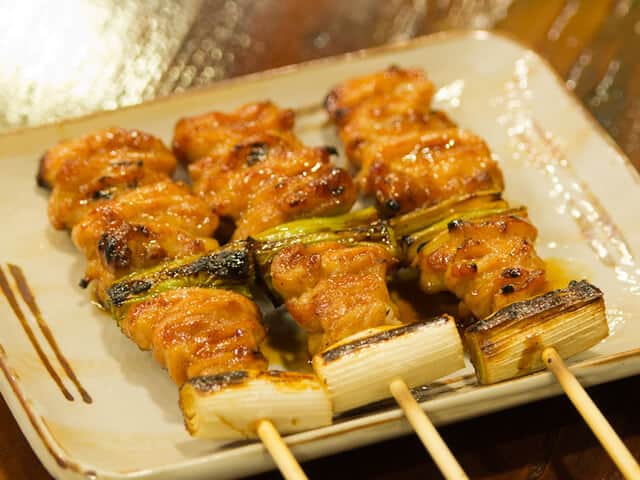
Many yakitori restaurants and the “yakitori town” that locals know throughout the city are all over Japan. Among them, the cities called “Seven Great Yakitori Towns in Japan” are Bibai City and Muroran City. Also, in Fukushima City in Fukushima Prefecture and Higashimatsuyama City in Saitama Prefecture. Additionally, the Imabari City in Ehime Prefecture, Nagato City in Yamaguchi Prefecture, and Kurume City in Fukuoka Prefecture.
How to eat Yakitori?

As for how to eat the yakitori, it is to remove each bite from the skewer before eating. On the other hand, locals assume that one person eats one skewer in the order from the top. There is an opinion that if you remove it from the skewer, the heat and meat juice will fade. And so, you should eat it without removing it from the skewer. In addition, Western skewered dishes are without exception, and they remove all ingredients from the skewers before eating.
Recommended Yakitori Restaurants
Yakitori Taro

Yakitori Taro in Hokkaido is a little different from other regions. Here, when you think of the dish, many people think of pork skewers. It’s a long-established yakitori restaurant that is open since the Showa period and serves the tastiest grilled skewered in town. In addition to pork, they also serve chicken skin and meatballs and in addition to salt and pepper, you can also have them with sauce.
Ippei Yakitori
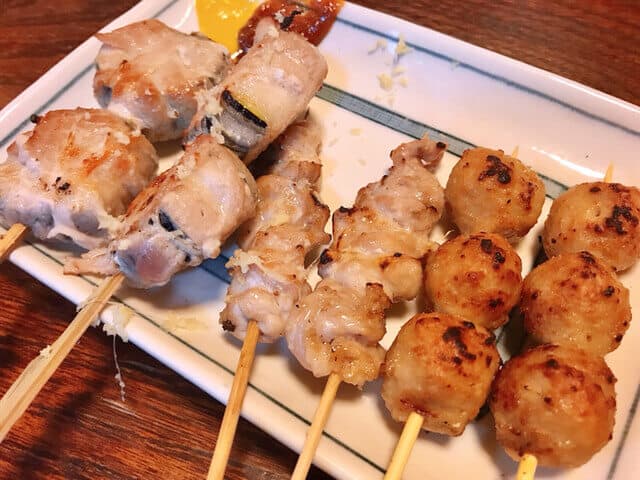
Muroran is a famous town when it comes to grilled skewered in Hokkaido. The characteristic of Muroran yakitori is that it is a basic pork and uses onions instead of green onions. Muroran yakitori often uses sauce, but depending on the location, it may be salt. It is a long-established yakitori restaurant that preserves the traditional taste.
Anki
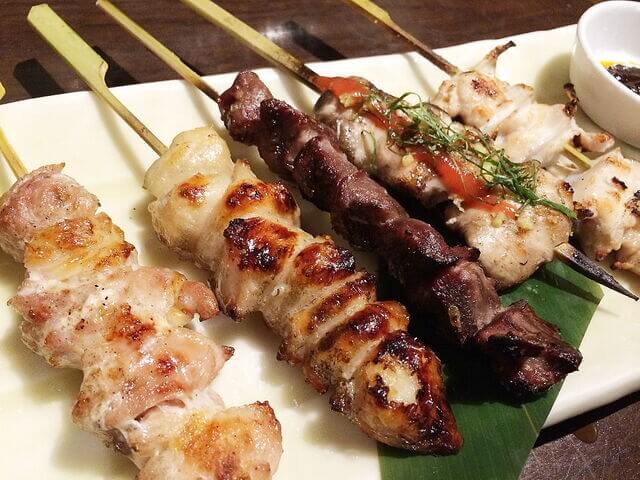
Charcoal Yakitori Anki, located in Osaka Prefecture, is a yakitori restaurant in front of Abiko Subway Station. Many know this shop for its volume of customers, not just yakitori. It’s a popular restaurant on the first floor of the building, so if you want to make sure you can eat it, I recommend that you go early. When you find the skewer you want to eat, select the sauce or salt and write it on the slip. Also, the shop serves many types of sake to match this dish.
Yakitori Cocco

It is a yakitori restaurant located about a 5-minute walk from JR Toyooka Station. The biggest feature of yakitori here is that it uses Nagoya Cochin. The restaurant’s specialty, Nagoya Cochin Yakitori, has skin, sushi, peach, meatballs, neck, and liver. Tsukune will be serve with Nagoya Cochin eggs. The shop carefully makes the yakitori by grilling Nagoya Cochin, which has a good reputation for its good taste. By doing so, it will likely become an unforgettable dish with a more condensed taste.
Conclusion
Regardless of how it started, it is now popular with local specialties and sake companions. There are even canned-yakitori out there. Recently, this dish seems to be popular among foreigners visiting Japan. It’s a cooked dish, and teriyaki sauce seems to be popular in the United States, so I think that’s maybe why many people like yakitori.
Many people associate it with barbecue in terms of “skewering and grilling.” At a proper yakitori restaurant, the liver and other parts are delicious without worrying about the odor. If you want to be able to eat the liver or internal parts, you may want to go to a yakitori restaurant that serves the best yakitori
If you like yakitori, you might also like these related dishes in Japan
FAQ
What is yakitori?
Yakitori is skewered chicken grilled over charcoal, commonly served in small pieces on bamboo sticks.
What parts of chicken are used?
Common parts include thigh, breast, skin, liver, heart, gizzard, and cartilage, each with different textures.
What does “shio” and “tare” mean?
“Shio” means seasoned with salt; “tare” is a sweet-savory sauce made from soy sauce, mirin, sake, and sugar.
Where can I eat yakitori?
You can find yakitori at specialized yakitori restaurants, izakaya (pubs), street stalls, and convenience stores in Japan.
Is yakitori eaten with rice?
Yes. It is often enjoyed with steamed rice, but many people pair it with beer, sake, or a highball instead.
What is negima?
Negima is a classic yakitori skewer with alternating pieces of chicken and green onion (negi).
What is tsukune?
Tsukune are seasoned ground-chicken meatballs often served on a skewer and sometimes brushed with tare and topped with an egg yolk.
Are there vegetarian skewers?
Yes. Many shops offer vegetable skewers such as shiitake, shishito peppers, asparagus, and mochi-wrapped items.
How is yakitori traditionally cooked?
Traditionally it is grilled over binchotan (white charcoal) which gives a clean, smoky aroma and high, steady heat.
Is it safe to eat offal (liver, heart)?
Yes, when prepared properly. Japanese yakitori chefs are trained to clean and cook offal safely; order from reputable shops if concerned.
How much does yakitori usually cost?
Prices vary: casual conveyor or street stalls can be inexpensive per skewer, while specialty restaurants charge more—expect ¥100–¥500+ per skewer depending on the cut and location.
Any eating etiquette for yakitori?
It’s polite to wait until skewers are served to everyone when dining together. Use shared chopsticks for communal sauces and avoid double-dipping.






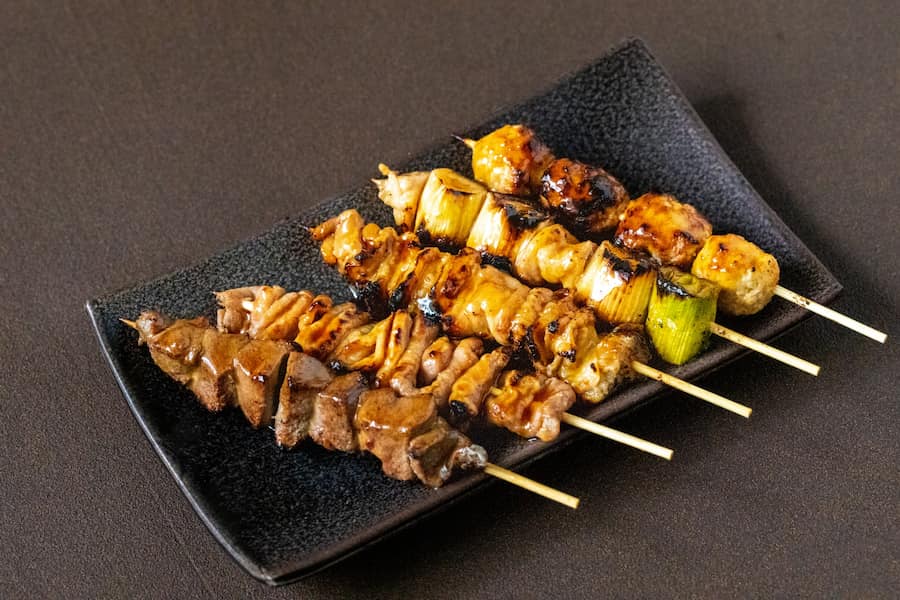
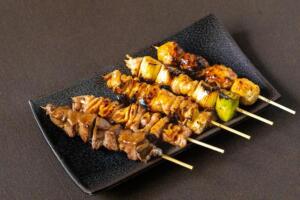
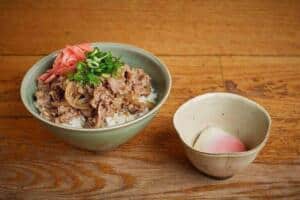
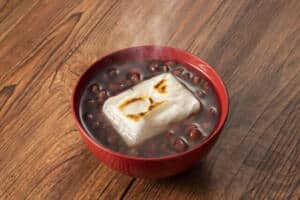
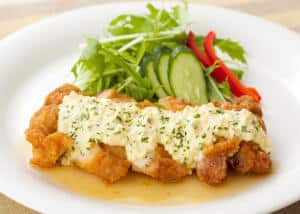
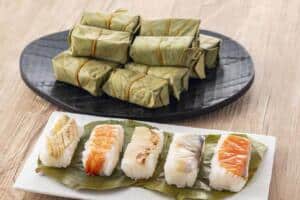

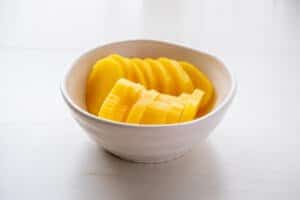
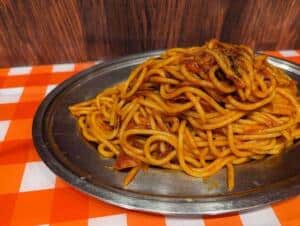
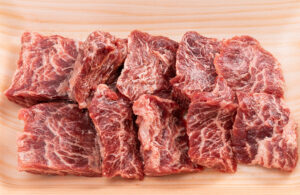
Comments
List of comments (1)
very good post, i definitely love this website, keep on it